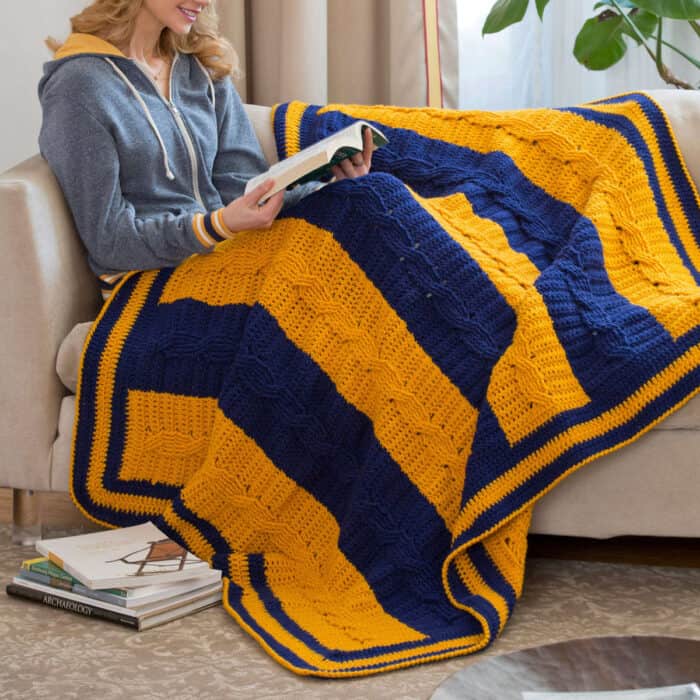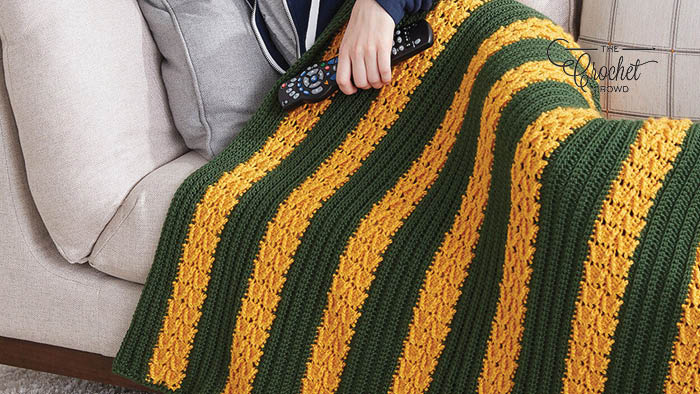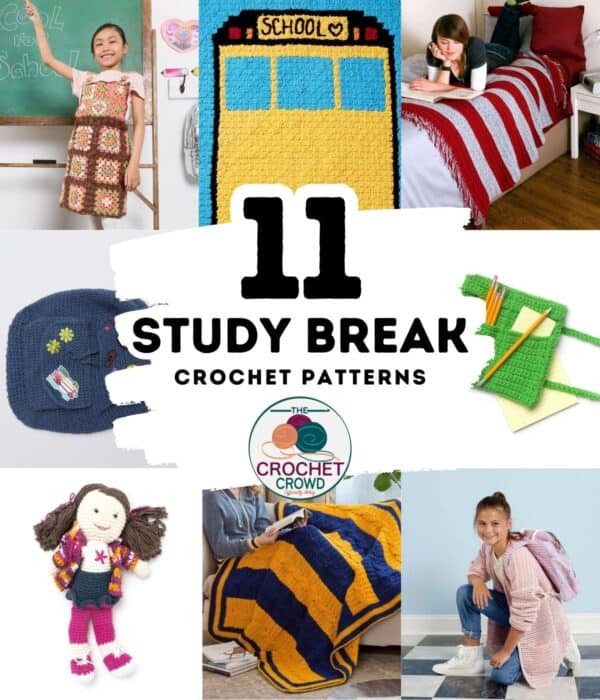Some of us love to support our school or organization's colours. There's a sense of pride in showing which school you belong to. Whether it's wearing a hat, school jacket or even decorating something at home, like a crochet blanket, with special colours.

I have pulled together some ideas for School Theme Crochet Projects.
- School Herringbone Blanket (Green & Yellow in Pic)
- Lily School Teacher Amigurumi Doll
- Crochet Backpack
- Rolled Up Pencil Case
- Crochet School Colors Blanket (Blue and Gold in Pic)
- School Spirit Throw (Red and Gray in Pic)
- Beginner Well-Schooled Throw
- Back to School Crochet Cardigan
- School Bus Crochet Blanket
- Juniper Crochet Granny Dress
- Spirit of America Crochet Blanket
Decorate and play with school ideas! Teach a child to crochet and give them an opportunity to have a lifetime skill.


Wendy says
#9 is struck thru the link is invalid I cannot find it on YS 18 Cool Kids Craft Ideas
https://www.yarnspirations.com/lookbook-2018-06-cool-kids-crafts-pattern-collection.html
this is the closest I came to it
Linda says
I am looking for a self striping yarn that includes GARNET, GOLD, BLACK AND WHITE ... ONLY ...
Would anyone out there have any ideas what kind and where it can be purchased.
Thank you... Thank you... Thank you...